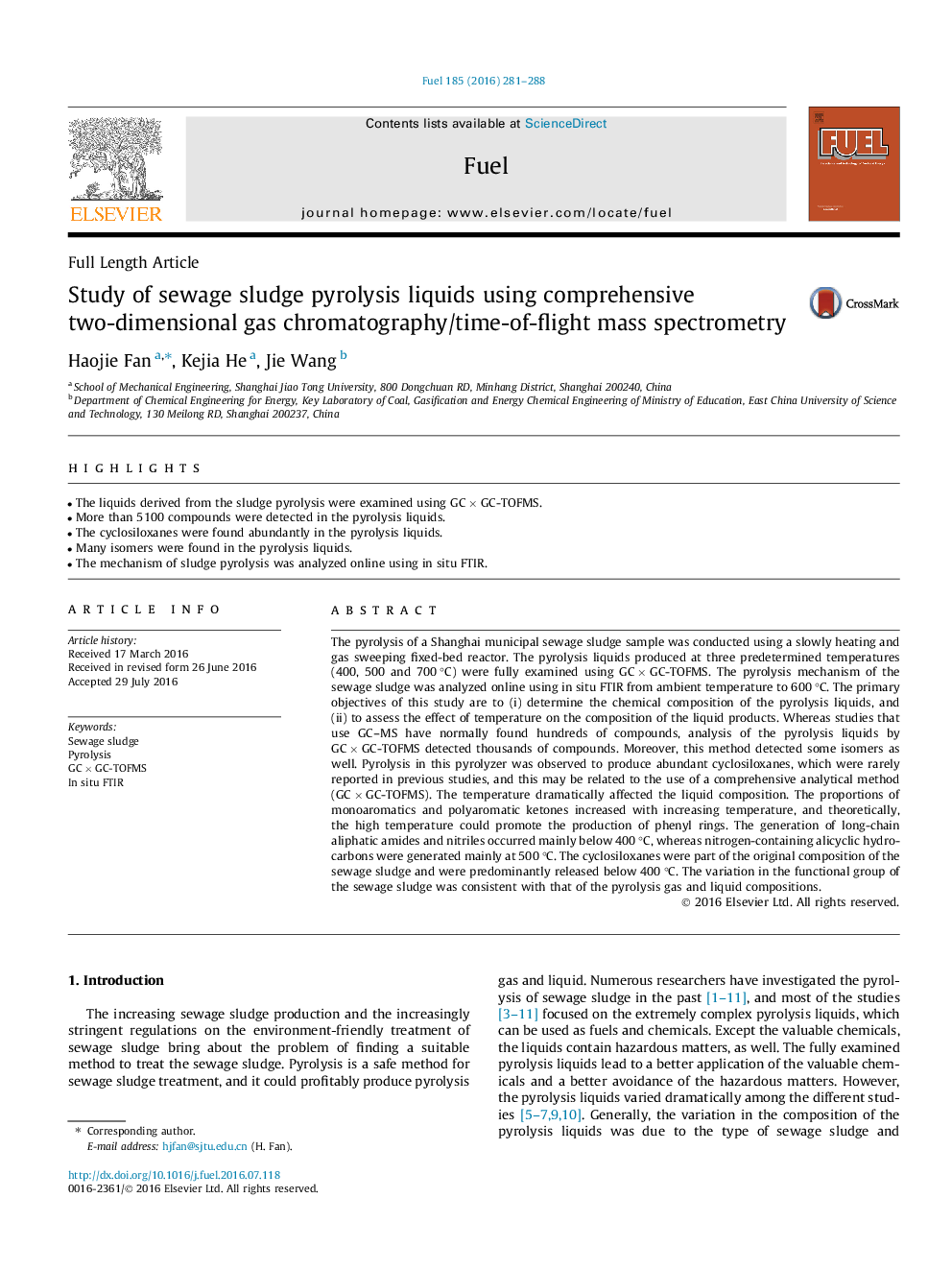| Article ID | Journal | Published Year | Pages | File Type |
|---|---|---|---|---|
| 6632755 | Fuel | 2016 | 8 Pages |
Abstract
The pyrolysis of a Shanghai municipal sewage sludge sample was conducted using a slowly heating and gas sweeping fixed-bed reactor. The pyrolysis liquids produced at three predetermined temperatures (400, 500 and 700 °C) were fully examined using GC Ã GC-TOFMS. The pyrolysis mechanism of the sewage sludge was analyzed online using in situ FTIR from ambient temperature to 600 °C. The primary objectives of this study are to (i) determine the chemical composition of the pyrolysis liquids, and (ii) to assess the effect of temperature on the composition of the liquid products. Whereas studies that use GC-MS have normally found hundreds of compounds, analysis of the pyrolysis liquids by GC Ã GC-TOFMS detected thousands of compounds. Moreover, this method detected some isomers as well. Pyrolysis in this pyrolyzer was observed to produce abundant cyclosiloxanes, which were rarely reported in previous studies, and this may be related to the use of a comprehensive analytical method (GC Ã GC-TOFMS). The temperature dramatically affected the liquid composition. The proportions of monoaromatics and polyaromatic ketones increased with increasing temperature, and theoretically, the high temperature could promote the production of phenyl rings. The generation of long-chain aliphatic amides and nitriles occurred mainly below 400 °C, whereas nitrogen-containing alicyclic hydrocarbons were generated mainly at 500 °C. The cyclosiloxanes were part of the original composition of the sewage sludge and were predominantly released below 400 °C. The variation in the functional group of the sewage sludge was consistent with that of the pyrolysis gas and liquid compositions.
Related Topics
Physical Sciences and Engineering
Chemical Engineering
Chemical Engineering (General)
Authors
Haojie Fan, Kejia He, Jie Wang,
